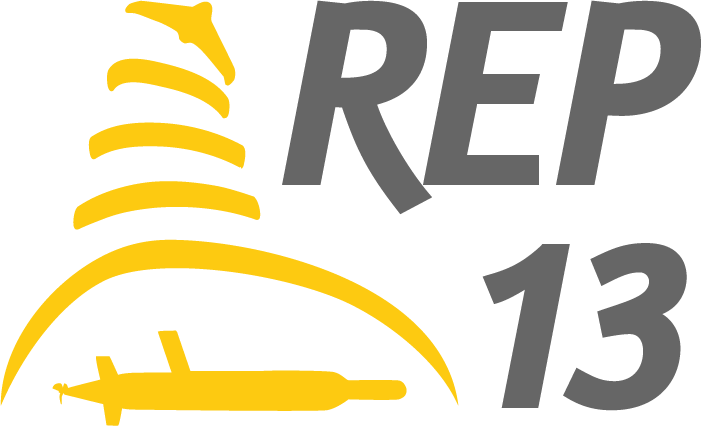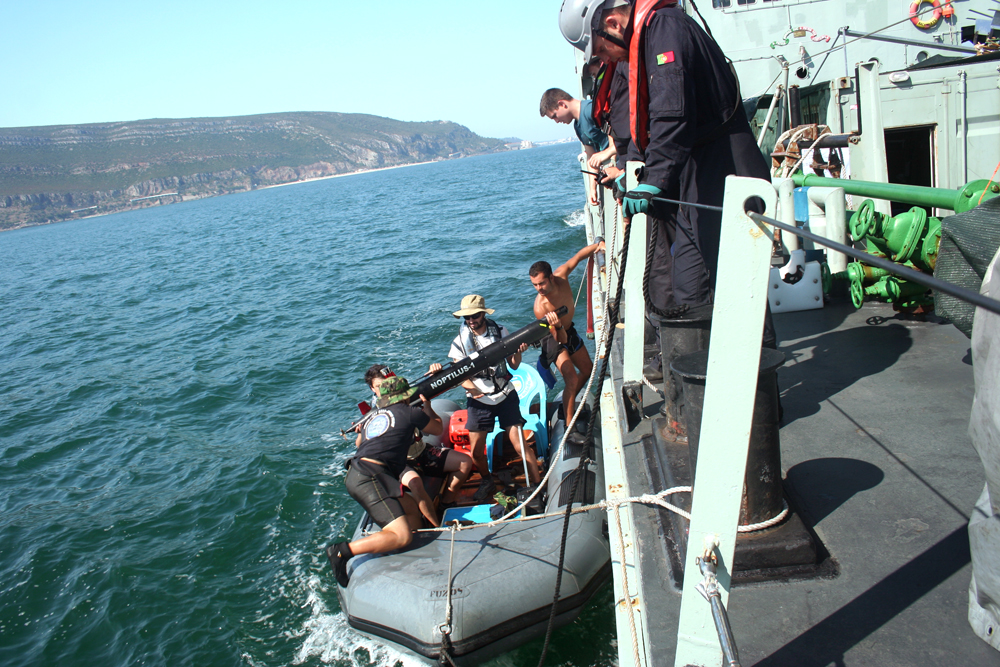The hope today was to do prolonged UAV tests while simultaneous AUV operations with T-REX. On reaching the outskirts of the Setubal channel rely by 10am, the Xtreme 2 AUV with T-REX was deployed immediately. Co-temporally a Wavy drifter was also deployed. By now only one Wavy was operational; wet contacts inside the drifter had apparently corroded shorting the vehicle in two of the three drifters.
The team was disappointed in seeing a persistent timing bug in T-REX which was a challenge to replicate in simulation. This version of T-REX was substantially different in terms of its interfaces and models that to the version flown routinely on the MBARI Dorado vehicle. So simple comparison was hard to do. Until a vehicle flying T-REX is actually deployed in the water, this bug was not visible. Fundamentally, instead of smoothly transitioning from one survey to the next, the system hiccups and dies after completing one pattern with Yo-Yo's in the water column. The exact symptoms were also hard to replicate. TheT-REX team continued through out the day to sit together and caucus about the bug and try various alternative solutions.
On the UAS front, an inadvertent change to the CPU of the aircraft (X8-02) carrying the IR camera failed to have the autopilot boot up properly. The objective of the day had been to fly the IR camera since it was to return to Norway the next day. Consequently, it was a lost opportunity to have flown the instrument some more even without an autopilot. This failure led the team to come together and get X8-00 to fly in automatic mode making long spirals around the drifter and the Xtreme 2 AUV. This flight in particular demonstrated that an earlier version of the autopilot was indeed stable. Further tests on the UAVs were grounded (including one long in planning for T-REX on UAS) since the important channel traversal with bathymetric mapping on the Noptilus needed to be launched with the change in tides. In addition only one RHIB for launch/recovery (even for a UAS) was available. This was therefore, an early termination day for both the T-REX and UAS teams.
The Noptilus tests went very successfully; first down channel and subsequently up channel off Setubal. The vehicle covered more than 10 km with its sidescan turned on. But the entire team got a big scare late in the day, when LBL range could not be established, it was expected that the vehicle would pop up right in the middle of the channel just as a large cargo vessel was about to pass over and the wind was picking up. Further waves washed onto the equipment on the accompanying RHIB with the Manta communication gateway, making an already stressful situation more nerve wracking. It took a while, but finally, the vehicle was visible over LBL and when it surfaced outside the channel, it sent an SMS further confirming an end of mission. There was a visible sigh of relief on the Bacamarte.













